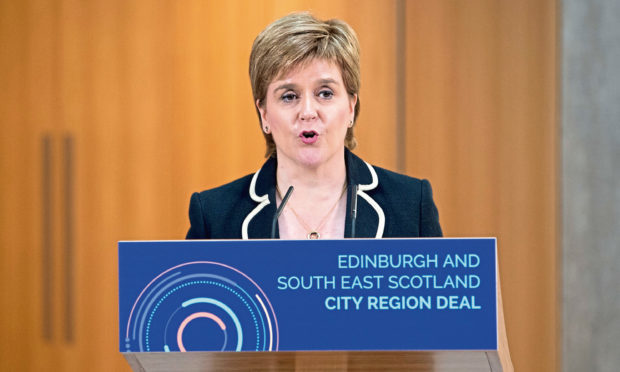The independence movement looks set to repeat the great mistake of the Brexit campaign.
We start with the NHS, the love letter to ourselves that sits at the heart of British politics.
It is a truism to say all politicians must pledge allegiance to the NHS if they are to progress. It is why both Brexit and indy campaigns played to the idea the NHS would be better if they won.
Brexit promised £350 million a week extra for the NHS and the indy offer included groups such as NHSforYES and the clear insinuation that freedom would be good for state-run health care.
Theresa May thought she could rescue the reputation of her Brexit if she found the fabled £350m a week and gave it to the NHS. Her desire became an open secret in political circles.
Nicola Sturgeon hoped to beat May to the headline by saying some NHS workers would get a pay rise.
This announcement greatly pleased the SNP conference in June.
Sturgeon was figuring Scotland would benefit from a budget boost from May’s announcement and this would pay for the salary hike.
A short time later, on the anniversary of the NHS, May said it would get an extra £20bn.
Good news for her, and good for the Scottish Government – but there was a catch. The PM did not have the money, she hoped to give the NHS extra from future tax rises and a Brexit dividend.
Bad news for Scotland, which would have to fund the NHS pay rise out of existing budgets – there would be no boost from UK spending (at least not soon). Worse news for the UK was to come.
The Office of Budget Responsibility – an official arm of government – considered May’s announcement and reported it was very unlikely there would be any Brexit dividend.
It figured the UK would give the EU less money after Brexit – thus saving about £5bn a year. However, as the UK was grappling with slow growth and high debt, it was quite possible any “dividend” would be swallowed up by existing spending.
What looked like extra on paper had become non-existent in practice.
The Treasury replied to the OBR saying more money for the NHS “will be partly funded by lower contributions due to the European Union”.
In translation “partly funded” means there might be a quid or two spare, while “lower contributions” means Brexit was based on a lie – we were promised no contributions.
This mess of rhetoric overbidding reality should be a gift to the Yes movement – it could show the UK is not to be trusted, Brexit is a mess and the NHS under the Tories is under-funded. However, just before Sturgeon’s conference announcement, she launched and endorsed the SNP’s Growth Commission.
This document U-turned on the economic promise of 2014 by saying the previously much-disputed UK figures on what Scotland earns and spends were actually right. That meant indy would result in less money for public services. Scotland would be about 15% poorer in terms of government spend.
The fact is the SNP’s economic case points to cuts, while its rhetorical case promises more money. The Growth Commission blew the 2014 referendum campaign promise of a better society to smithereens.
The Brexit promise was based on basic arithmetic and simple thinking ––there never would be £350m a week for the NHS. The Growth Commission has attempted to avoid repeating such a deceit but in so doing has blown apart the emotional and social assumptions of the Yes movement. If, as the SNP states, indy means cuts, then what exactly is better about it than staying in the UK?
This is the question SNP delegates would like to argue at the October conference. The sensible among them will realise if the money isn’t there then Yes needs to explain how things will be better on less cash.
Realistic numbers needn’t mean disaster for indy. It just requires the movement to consider the reality of what they argue for, and provide intelligent answers to the obvious questions.
However, Sturgeon has banned any discussion of the Growth Commission from the conference agenda – which is very odd given she said at the launch of the suicide note she wanted a “national debate” on its contents.
What’s that sound? It’s the silence of a political argument falling apart.
